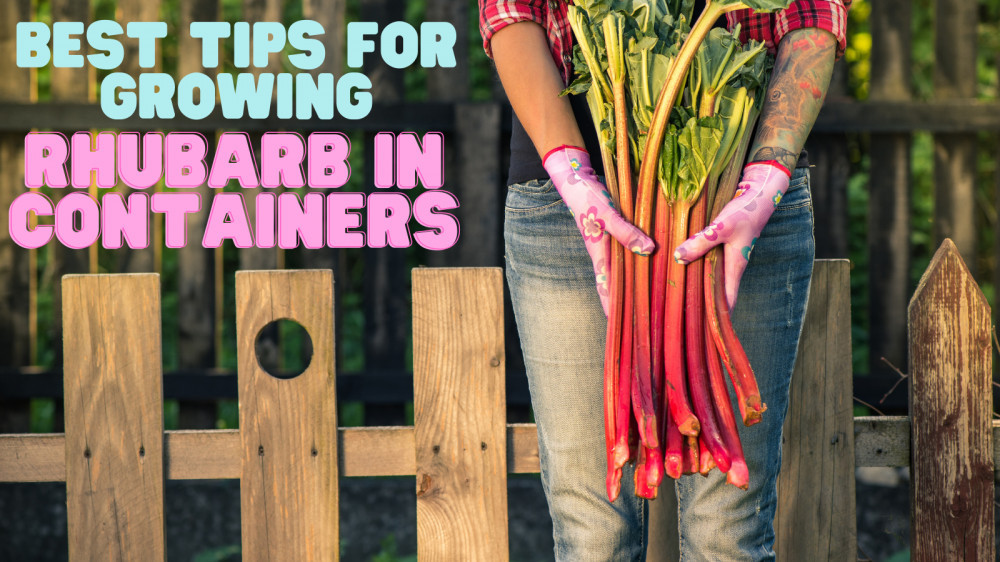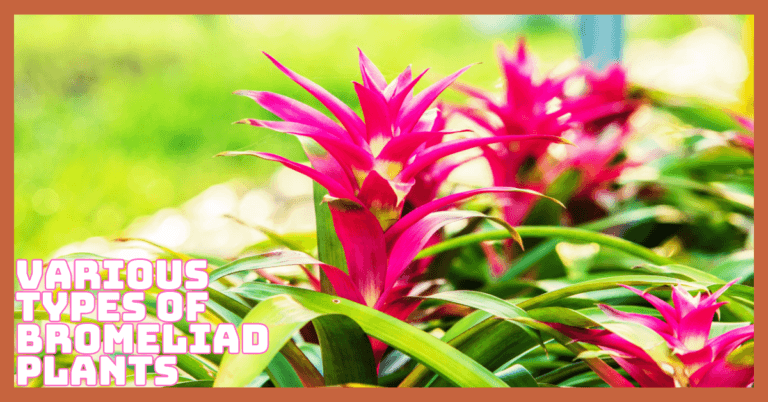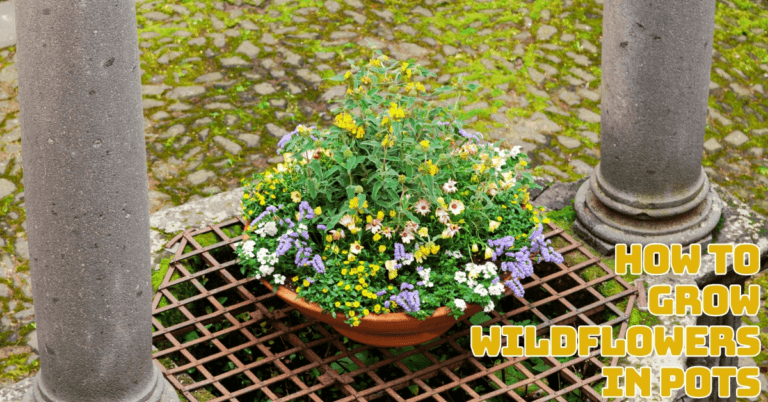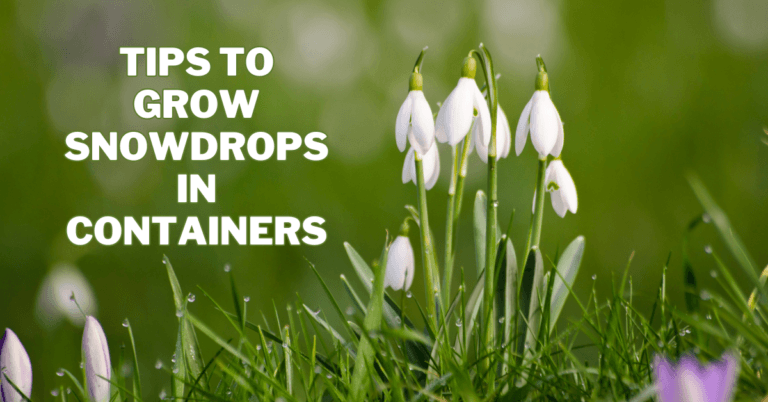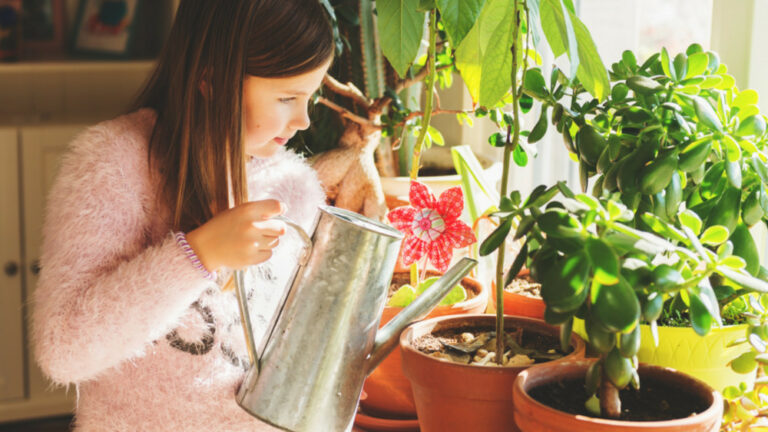Best Tips For Growing Rhubarb In Containers
Best Tips For Growing Rhubarb In Containers
Rhubarb may be grown in pots. Over the winter, it will require further protection. Plant it in a drainage-holed container accommodating at least 5 gallons of well-drained soil.
Incorporate a delayed-release fertilizer into the soil to make your task easier. Check the soil daily and water deeply as needed.
You may need to water once or twice a day during warmer weather. A single application of slow-release fertilizer should last the entire season.
Place the container in an unheated garage, bury it in the ground, or wrap straw bales over it (if left outside and above ground) to insulate the roots.
When the earth thaws and becomes dry, water it. Bring the pot outside, raise it from the ground, or remove the straw when the weather warms up in the spring. Your additional efforts will be forgotten when you bite into your homemade rhubarb pie or sauce.
Different Types Of Rhubarb Plants
You should find the best variety for your zone to grow rhubarb in containers.
1. Cherry Red Rhubarb
The hybrid variety ‘Cherry Crimson' (R. x hybridum) lives up to its name with its vibrant red stalks – plus it's one of the sweetest and least sour types available.
This makes it great for individuals who have never tried rhubarb before and are concerned about the vegetable's renowned puckery character. You may use less sugar in your pie recipe as an added benefit.
‘Cherry Red' grows well in USDA Hardiness Zones 2-8, although it prefers northern California's rolling hills and colder environment.
It may grow up to three feet tall and broad at maturity, making it a magnificent decorative plant.
However, I don't see how someone couldn't cut stalks for pie, too! Plant ‘Cherry Red' in full sun or partial shade for optimal results, and enjoy fresh sticks from April through June.
2. Holstein Bloodred Rhubarb
The stalks are as scarlet as blood. It yields tempting, luscious red stems. Holstein bloodred may reach heights of 4 feet and spread widths of 5 feet, producing a large amount of Rhubarb.
The crimson stalk is thought to be the juiciest of all, incorrect. This type will give you an advantage if you intend to sell them. They thrive in the sun and are an heirloom plant that you will enjoy for years.
3. Chipman’s Canada Red Rhubarb
‘Chipman's Canada Red,' often known as Canadian Red, is another ruby-coloured variety. This one has large, juicy stalks, expands to three to four feet tall and broad, and grows well in Zones 3-8.
This lovely cultivar was developed in frigid Winnipeg, Manitoba, Canada, and is ideal for northern growers.
Plant outside in the autumn, winter, or early spring (as soon as the earth thaws). Harvest from April to June, but wait at least one year after planting the crown for the optimum harvest. Nature Hills Nursery sells 2-4-year-old plants in #2 containers.
4. Kangarhu Rhubarb
Try the wonderfully called ‘KangaRhu' for a bright crimson stalk that retains its unique red hue even after cooking.
‘KangaRhu' is hardy in Zones 4-8 and can withstand moderate heat, making it ideal for Midwest or South gardeners.
It was created using Australian rhubarb seeds to create a cultivar that could endure high temperatures!
Because the stalks are as sour as red, this cultivar is excellent for individuals who enjoy mouth-watering delicacies.
The plant may grow up to three feet tall and broad at maturity. Grow in either part shade or full sun for a yield lasting from late spring to early October.
5. Crimson Red Rhubarb
‘Crimson Red,' a popular Pacific Northwest cultivar, prefers moist, chilly conditions. The brilliant red stalks will remain bright crimson and joyful throughout Oregon and Washington's gloomy days so that PNW residents may celebrate.
You can plant sweet-tart ‘Crimson Red' even if you don't live in the Pacific Northwest because it grows in Zones 3-8 and enjoys sunshine and cloud cover.
In just one year, you'll be able to taste your fresh ‘Crimson Red.' It may reach three to four feet tall and three feet broad, much like other varieties.
Harvest excellent ‘Crimson Red' stems from April through June for the most decadent flavour. Burpee sells bare root balls for planting in the fall or two to four weeks before the typical last winter frost date.
6. Glaskins Perpetual Rhubarb
This is a kind of English rhubarb with unique stalks. Its stalks are crimson at the bottom and gradually turn green towards the top. It's a terrific rhubarb for canning and freezing. They can also be used in pies and jams.
Glaskins perennial prefers cooler areas and develops quicker than most other types. Indoors, the seeds can be cultivated until they are robust enough to be transplanted.
7. German Wine Rhubarb
The hybrid ‘German Wine' (R. x coltorum) is good for making wine! Rhubarb wine connoisseurs claim it tastes like a great rosé wine, so wine lovers take heed.
This cultivar is smaller than its brothers, reaching only two feet high and spreading two to three feet wide at maturity, making it an ideal alternative for container cultivation or smaller settings. The distinctive pinky-green speckled stalks are ready for harvest from late spring through early summer.
This is also one of the sweetest varieties available.
Plant ‘German Wine' from a root ball or crown division as soon as the ground thaws in the spring in Zones 3-8 and enjoy your first harvest in a year.
8. Ornamental Rhubarb
This is a blooming rhubarb type cultivated for decorative purposes rather than for sustenance. Rhubarb is a medium-sized shrub with lovely green foliage and lovely blossoms.
This Rhubarb produces tasty little stalks but is best suited for landscaping your front yard. Their leaves are distinctively formed and have crinkled edges.
9. Glaskin’s Perpetual Rhubarb
This cheerful species thrives in Zones 3-9. However, it prefers colder summers if possible. And it's a cultivar that can be harvested earlier than others.
Start the seeds inside towards the end of spring or the beginning of summer. Allow them to develop until the earth thaws the following spring.
If you live somewhere where the ground doesn't get that cold, plant them outside four weeks before the usual last frost date.
They're ready to harvest when the red-and-green stalks reach 12-14 inches in length. Cut a few outside stalks from the plant's base using a knife, and enjoy!
10. Turkish Rhubarb
Although red rhubarb is more frequent, green rhubarb may still produce strong-flavoured stalks.
Turkish Rhubarb is a green rhubarb type with a green inner and outer stem originating in Turkey. Their stalk, on the other hand, has a crimson base.
It takes a bit longer than other types to mature. Thus, the harvest lasts a little longer than the ordinary rhubarb variety.
The stalks can grow up to 18 inches long but are usually much shorter. When this plant is not picked up promptly, holes emerge in the stem.
11. Prince Albert Rhubarb
The heirloom cultivar ‘Prince Albert,' named after Queen Victoria's husband, has been around for nearly a century.
‘Prince Albert,' with its reddish-green stalks that become rose-pink when cooked, creates a lovely pie filling or jam.
Stalks are bigger and juicier than other types, with just the right amount of bitterness and sweetness.
Some even claim that ‘Prince Albert' has the most incredible flavour of all the types, but it all depends on who you ask.
Harvest this variety in early April to late May for the optimum flavour, whether forced inside or growing outdoors in Zones 3-8. The plant may grow to be three to four feet tall and broad.
12. Timperley Early Rhubarb
If you're looking for an all-rounder, Timperley early is a great choice, and it develops early, as the name says. Its stalks may grow up to 24 inches long and are disease-resistant.
Because of its early maturation, you may pick only a few stalks in the first year.
13. Riverside Giant Rhubarb
Riverside Giant, an almost entirely green-stalked cultivar, is one of the coldest and hardest types. It can tolerate temperatures as low as -40°F, making it suitable for Zones 3 (or 2b in a cold frame) through 7.
‘Riverside Giant' grows taller and wider than most other types – up to five feet tall and four feet broad – but it's also one of the slowest, with a three-year wait before harvest.
As a result, this type is suitable for individuals who have patience and desire an edible hedge.
‘Riverside Giant' would look great by your front entrance, and you could harvest it for tart pies from April through June.
This variation should not be confused with the “giant rhubarb” plant, Gunnera manicata, a distinct species with nothing to do with rhubarb except for its common name.
14. Sunrise Rhubarb
‘Sunrise' freezes and cans remarkably well, making it ideal for individuals who enjoy harvesting rhubarb to preserve for later use.
This is owing to its extra-sturdy, thick pink stalk, which does not turn mushy and disgusting even after three months in the freezer. Perfect for anyone who wants a rhubarb pie but has no fresh stalks in winter!
The plant grows to three feet tall and broad and may be harvested from April through June in Zones 3-8.
15. Hardy Tarty Rhubarb
Hardy Tarty (also known as ‘Colorado Red') is a heritage cultivar that produces scarlet stalks as wonderfully sour as the name indicates.
It's another variety that can endure hot weather while being classed in Zones 3-8, making it an ideal choice for both southern and northern gardens.
Because it's already sour, and rhubarb grows tarter as the season progresses, you may pick this kind from late spring through summer.
At maturity, this variety grows two to three feet tall and broad and prefers a sunny location in the garden.
16. Timperley Early Rhubarb
Do you reside in Zone 8 or higher? The Timperley Early cultivar is ideal for you because it is one of the simplest to force inside and one of the first to mature.
‘Timperley Early' can be harvested as early as February or March if forced indoors or grown outdoors from April to June.
This cultivar's stalks are pinkish and beautiful, growing up to two feet broad and three feet tall, and have a wonderful sweet-tart flavour.
17. Victoria Rhubarb
Victoria is well-liked by gardeners. Its medium-sized stalks are deep crimson at the base and gradually lighten as they reach the top. It is one of the earliest known kinds, with the first record dating back to 1837.
It has a tangy flavour and is suitable for sweets, sauces, and jams. One thing to keep in mind is that it is a late-maturing variety.
18. Holstein’s Bloodred Rhubarb
This historical type makes me want to devour a chunk of delicious red cow flesh for obvious reasons. I'm also a vegetarian!
The stalks of ‘Holstein's Bloodred' are as red as blood. It's also a great grower, producing five to ten pounds of stalks from old, established plants.
The plant may grow four feet tall and five feet broad. That's quite a bit of ‘Holstein's Bloodred.'
You could put up a roadside stall and sell it to pie-hungry locals. Crowds would flock to the succulent crimson stems.
People who know nothing about rhubarb other than that it's delicious in pies are likely to associate it with crimson stalks.
Green stalks are not indicative of an unripe plant, which is incorrect. Everything is dependent on variety.
However, this cultivar has a typical rhubarb appearance that might work in your favour as a roadside fruit and vegetable vendor.
(By the way, you're welcome for the concept.) (A wink, a wink.) Grow in Zones 3-8 with ample sunlight. From April through June, you may enjoy your ruby-red harvest.
19. Crimson Red Rhubarb
This Rhubarb likes chilly weather and moist regions, which is excellent news for folks who live in rainy areas like the Pacific Northwest. It is the only important rhubarb kind in Oregon, also known as red cherry or crimson wine.
This Rhubarb variety produces long red stalks that may be used in pies or frozen. It takes approximately a year to harvest and, like other types, may grow up to 3 feet tall and 4 feet broad.
Tips For Growing Rhubarb in Containers
Planting Time Of Rhubarb
Rhubarb prefers and flourishes in chilly temperatures. Plant it 4-6 weeks before your area's latest expected frost date.
The crowns can also be planted in the autumn. It takes 2-4 years for the plant to mature completely. Rhubarbs may be produced all year because the woody rhizomes and crowns can remain frozen without being damaged by cold.
Avoid overheating the plant in warmer areas since it produces green petioles, which are less attractive than red ones.
Keep the plant in the shade in hotter climates, such as Oregon. It thrives at temperatures between 40°F (5°C) in the winter and 75°F (22°C) in the summer.
Grow Rhubarb In Pots From Seeds
Before planting, soak the seeds in warm water overnight. Plant them in a potting mix and water them periodically to keep the soil uniformly wet. Overwatering should be avoided. The seeds will germinate in 2-3 weeks.
Grow Rhubarb in Pots From Crowns
Growing rhubarb from crowns is highly recommended for success and a shorter culture period.
Dig a hole twice the size of the crown, plant it, and cover it with the earth so the tips are visible. Keep it in direct sunlight until the water drains from the holes in the pot.
Grow Rhubarb in Pots From Root Parts
Plants should be divided in the spring. Remove the entire plant and trim the top growth. This will reveal the crown.
Now, snip out any decaying pieces of the roots. Cut the crown into pieces, each with at least 2-3 stem buds and roots. For fresh plants, place these parts in individual pots.
Container Requirements To Grow Rhubarb
Do you intend to grow crowns, divisions, or bare roots in containers outside? Then you'll need something at least 20 inches tall and wide.
You must choose a light plastic, stronger terra cotta kind, or anything lovely and ornamental. Learn more about the finest materials for containers, pots, and planters here.
Choose a pot at least eight inches wide and seven inches deep for beginning seeds that will be transplanted into a more extensive outdoor container later.
This allows your plant to develop and establish itself before transplanting without taking up much space in your home.
You may also start seeds in trays and transfer the seedlings later.
Choose a pot with a draining dish, drainage holes that do not leak onto your chosen growth surface, or a self-watering insert.
A normal pot can also be filled with a layer of gravel at the bottom to facilitate drainage away from the root system.
Soil Requirements To Grow Rhubarb In Pots
Growing rhubarb requires well-draining soil rich in organic materials. Adding well-rotted manure to the soil and a spoonful of bone meal fertilizer or seabird guano at plating can give the plant a head start.
A sufficient amount of organic compost added to the soil will preserve the crown during the winter.
Always choose deep, rich, well-drained, sandy loam soil since it supplies necessary nutrients to the plant and aids in producing an early harvest. Make it a habit to add rich compost to the soil in the pots every year.
Watering Rhubarb Plants
Maintaining the soil properly wet for healthy and developing rhubarbs is critical. Water the plants and then let the excess water run away.
Never allow the soil to dry up, and never overwater the plant. Check 1-2 inches of dirt with your finger for proper balance; if it seems dry, water the plant.
Fertilizing Rhubarb
You may feed container-grown rhubarbs once every 4-5 months with a balanced liquid fertilizer.
You may also feed the plant twice a year, once in early spring and in fall, with half a cup of 10-10-10 fertilizer.
Avoid fertilizing the leaves by fertilizing around the base. Wait until the second year to fertilize a new plant.
Mulching And Spacing
A top layer of mulch will assist the soil in retaining moisture for a more extended period.
Thickness might range between 1 and 2 inches. Mulching can be done with grass clippings or bark chips.
If you're growing numerous plants in the same container, keep them at least 3-4 feet apart. This will allow the plant's leaves to grow and optimum air circulation.
Pests & Diseases Of Rhubarbs
Rhubarb is pest-resistant; if you plant it in pots, you won't have to worry about weeds or bugs.
However, keep looking for fungal leaf rot, which can occur if the leaves remain moist or damply embrace other nearby leaves for an extended period.
To avoid this, water at the plant's base, avoiding the leaves. Remove any dead or dying foliage growth throughout the season to maintain optimal ventilation.
If you locate the fungus, remove the affected leaf and stalk.
If you cut the diseased bits away, you may still use the stalk in your cooking, and removing the leaf will help prevent the illness from spreading to the remainder of the plant.
So, what is the most dangerous pest to avoid?
The rhubarb weevil is a yellowish, long-snouted, half-inch-long insect that eats notches in your lovely stems and leaves. If you see weevils on the plant, scrape them off and destroy them, so they don't return.
It's critical to capture them early before they start laying eggs and increasing at alarming rates.
Harvesting Rhubarb
Wait until the second season of growth to harvest your stalks. This will be the most challenging aspect of cultivating your own, especially when your taste senses need pie!
Most cultivars will be available for harvest from late April to June.
Harvest the outer stalks when 12 to 18 inches long by locating the root with your fingers and pushing hard to break them off one at a time.
With a tapered end, each stalk should readily separate from the base. Remove the leaves and place them in your compost container.
Because of the high quantities of oxalic acid, they are inedible and potentially hazardous, so don't feed them to youngsters or pets.
Take only approximately a fourth of the total stalks during the first harvest of your plant. You can take everything except one-third next year.
Leaving a few stalks to remain allows the plant to conserve energy for winter dormancy and spring reawakening.
If you reside in Zones 7 or above, relocate your container to a cool, covered location — a basement, garage, or even an outdoor freezer – after temperatures frequently exceed 80°F.
It's good if this location drops below 40°F during the winter, so your plant may stay there during the chilling time. Alternatively, you may take it back outside when the summer heat has passed.
If you're growing your plant as an annual, harvest every single stalk when it's ready, let the remaining above-ground sections of the plant wilt in the heat – or dig it up and dispose of it – and replant a new division or crown in the fall or the next spring.
Those in Zones 3–6 can keep the containers outside to overwinter peacefully in the cold.
Conclusion
The edible stalks of rhubarb are picked for their rich and tangy flavour. You may make rhubarb pies or jam or simply eat sugar-dipped stalks!
And there is no better way to assure a constant supply than to cultivate them yourself! If you have any questions about growing rhubarb in containers, please comment here; I’ll try to make a solution.
I trust you enjoyed this article on the Best Tips For Growing Rhubarb In Containers. Please stay tuned for more blog posts to come shortly. Take care!
JeannetteZ
>>>Please click here to find some delicious vegan rhubarb recipes<<<
>>>Please click here to read my all-inclusive article about Container Gardening<<<
>>>Are you interested in homegrown herbs and medicine? Please click here to find out more about it!<<<
Your Opinion Is Important To Me
Thoughts? Ideas? Questions? I would love to hear from you. Please leave me your questions, experience, and remarks about this article on the Best Tips For Growing Rhubarb In Containers in the comments section below. You can also reach me by email at Jeannette@Close-To-Nature.org.
Disclosure
This post may contain affiliate links. I earn from qualifying purchases as an Amazon Associate and other affiliate programs. Read my full affiliate disclosure.
You might also enjoy these blog posts:
Easy Steps Of Growing Mint In A Container
Best Tips To Growing Herbs In Containers
Best DIY Natural Beauty Tips For Glowing Skin
Best Persian Cat Health Care Tips

